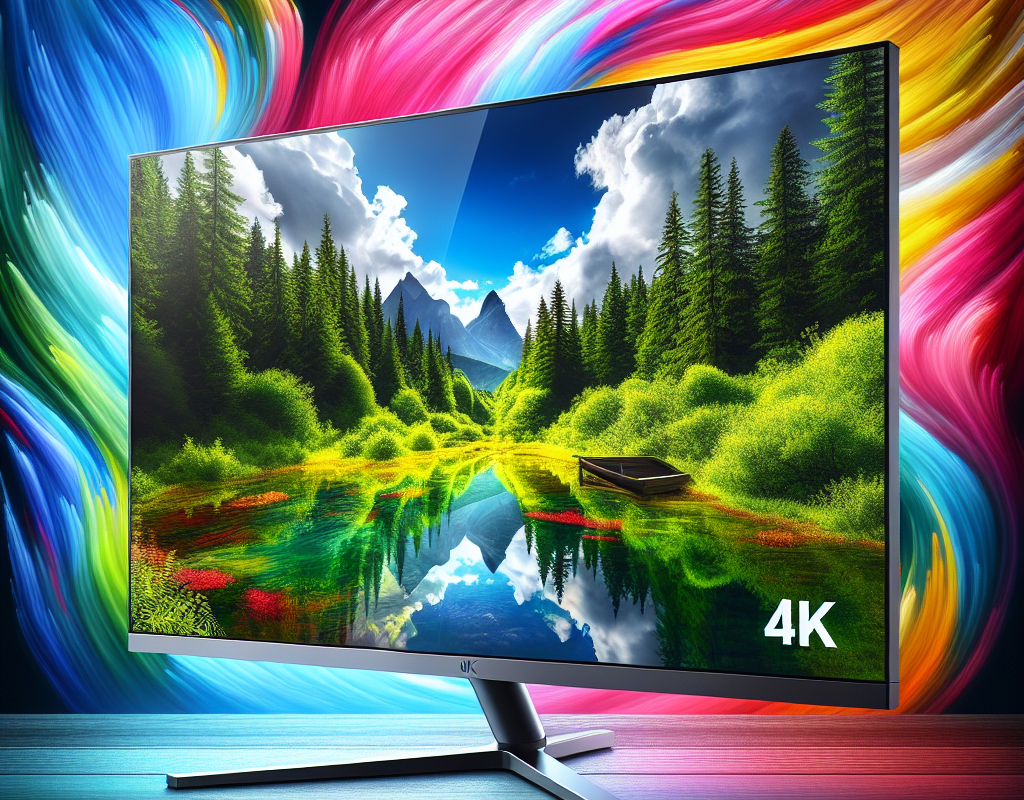In the world of modern displays, resolution is one of the most important factors to consider. Among the various types of screens, LED monitors are widely discussed. This prompts the critical question: Can LED monitors display 4K resolution? We will delve into this topic, exploring the technical aspects, advantages, disadvantages, and comparisons to other technologies.
Understanding LED Monitors and 4K Resolution
LED (Light Emitting Diode) monitors employ LEDs for backlighting the display. These monitors are known for their excellent color accuracy, brightness, and energy efficiency. 4K resolution, also known as Ultra High Definition (UHD), represents a display resolution of approximately 3840 x 2160 pixels. This provides much higher clarity and detail compared to Full HD resolution (1920 x 1080 pixels).
Comparison of Resolutions
| Resolution | Pixel Count | Description |
|---|---|---|
| HD (720p) | 1280 x 720 | Standard High Definition |
| Full HD (1080p) | 1920 x 1080 | Enhanced High Definition, common in most devices |
| 4K (UHD) | 3840 x 2160 | Ultra High Definition, four times the pixels of 1080p |
| 8K | 7680 x 4320 | The future of UHD, sixteen times the pixels of 1080p |
Can LED Monitors Support 4K Resolution?
The simple answer is yes. LED monitors are capable of displaying 4K resolution. Many of the modern LED monitors are designed to support higher resolutions, including 4K. This capability depends on the quality of the panel, the backlighting technology, and the processing power of the monitor.
Technical Considerations
- Panel Quality: The quality of the panel used in an LED monitor plays a crucial role in determining if it can handle 4K resolution. Panels designed for higher resolutions provide better performance and detailed picture quality.
- Backlighting Technology: Advanced LED backlights, such as Quantum Dot technology, enhance the display’s color accuracy and brightness, making 4K content look more vivid.
- Processing Power: The internal processor of the monitor must be capable of handling 4K content efficiently. This includes support for the required bandwidth and compatibility with modern connection standards such as HDMI 2.0 or DisplayPort 1.4.
Advantages of 4K LED Monitors
Opting for a 4K LED monitor over other types of displays comes with several benefits.
- Enhanced Viewing Experience: With four times the pixel count of 1080p, 4K resolution offers exceptional detail and clarity, improving the overall viewing experience.
- Better Productivity: The higher resolution allows for more screen real estate, which is beneficial for multitasking and productivity tasks.
- Future-Proofing: As 4K content becomes more prevalent, having a 4K monitor ensures you can enjoy content in its native resolution for years to come.
- Improved Color Accuracy: Many 4K LED monitors come with advanced color calibration that improves color accuracy for professional work such as video editing and graphic design.
Challenges and Considerations
While 4K LED monitors offer many advantages, there are some challenges to consider:
- Cost: 4K monitors can be more expensive than their Full HD counterparts, although prices have been decreasing over time.
- Performance: High resolution can demand more from your hardware. Ensure your PC or console can support 4K content without compromising performance.
- Content Availability: Although growing, the availability of 4K content is still limited compared to 1080p content.
Comparisons with Other Display Technologies
LED vs. OLED
OLED (Organic Light Emitting Diode) monitors provide better contrast and color accuracy compared to LED monitors. However, they are often more expensive and can suffer from burn-in issues over time.
LED vs. LCD
While LED monitors use LED backlighting, traditional LCD (Liquid Crystal Display) monitors may use fluorescent backlighting. LED-backlit LCDs generally offer better performance and energy efficiency.
LED vs. QLED
QLED (Quantum Dot Light Emitting Diode) technology, used mainly by Samsung, is a type of LED that uses quantum dots to improve brightness and color accuracy. QLED monitors often provide superior performance compared to standard LED monitors.
Conclusion
LED monitors are capable of displaying 4K resolution, offering a plethora of benefits including enhanced viewing experiences, better productivity, and future-proofing. While there are challenges such as cost and hardware requirements, the advantages outweigh the disadvantages for many users. When choosing a 4K monitor, consider factors such as panel quality, backlighting technology, and your specific needs. As 4K content continues to grow, having a capable 4K LED monitor ensures you’re ready for the future of high-definition viewing.




